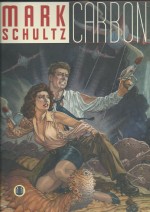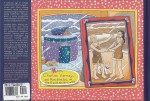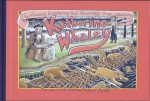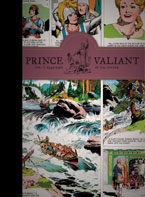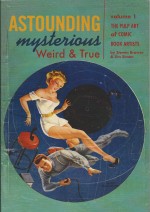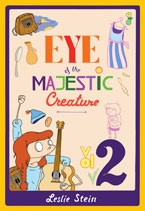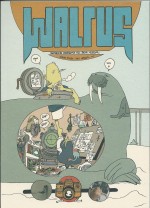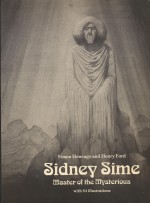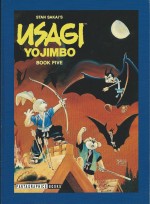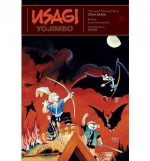
By Gilbert, Jaime & Mario Hernandez (Fantagraphics Books)
ISBN: 978-1-60699-598-3
In the 1980s a qualitative revolution forever destroyed the tired moribund, stereotypical and ghettoised ways different genres of comic strips were produced and marketed. The iconic force most evidently shattering those comfy pigeonholes we’d built for ourselves were three guys from Oxnard, California; Jaime, Mario and Gilberto Hernandez.
Love and Rockets was an anthology magazine originally self-published in 1981which featuring intriguing, adventuresome larks and wildly different comic narratives that pretty much defied classification, all wrapped up in the sheen and ephemera of LA’s Hispanic and punk music scenes.
Stories varied from slick, sci-fi-soused hi-jinx starring punky young gadabouts and their extended eccentric circle of friends – or the heart-warming, terrifying, gut-wrenching soap-opera fantasies from the rural Central American paradise of Palomar.
Jaime Hernandez was always the most noticeable part of the graphic literary revolution: his sleek, seductive, clean black line and beautiful composition, impeccably rendered heroes and villains and the comfortingly recognisable – though thoroughly “roofied†comic book iconography – particularly appealing to readers raised on traditional Marvel and DC fare.
However his love of that material, as well as the influence of Archie Comics cartoonists (especially Sam Schwartz, Harry Lucey and Dan De Carlo), accomplished and enticing as it is, often distracted from the power of his writing, especially in his extended epics featuring of Maggie Chascarillo and Hopey Glass – AKA Maggie & Hopey, Las Locas, something never true of Gilbert, whose simplified cartooning and subtle, reined-in graphics never overwhelmed the sheer magnetic compulsion of his scripts…
The Hernandez Boys, gifted synthesists all, enthralled and enchanted with incredible stories that sampled a thousand influences conceptual and actual – everything from Comics, TV cartoons, masked wrestlers, the exotica of American Hispanic pop culture and even German Expressionism. There was also a perpetual backdrop displaying the holy trinity of youth: Sex and Drugs and Rock and Roll…
The result was dynamite. Mario only officially contributed on rare occasions but his galvanising energy informed everything – and his covers here display a fondness for those battered genres both tantalising and darkly skewed…
Jaime’s sleek, enticing visual forays explored friendship and modern love whilst destroying stereotypes of feminine attraction through his fetching coterie of Gals Gone Wild, and Gilberto created a hyper-real rural landscape macrocosm in Palomar: a playground of wit and passion and human imperfection in the quicksilver form of a poor Latin-American village with a vibrant, funny and fantastically quotidian cast created for his extended saga Heartbreak Soup.
Life, death, poverty, adultery, murder, boredom, magic, weird science and gossip shaped Palomar’s metafictional environs, as the artist mined his own post-punk influences in his deceptively addictive primitivist drawing style which blended his personal mythologies of comics, music, drugs, strong women, gangs, sex and family.
The denizens and survivors of Palomar still inform and shape Beto’s work, both directly and as imaginative spurs for spin-off stories.
Winning critical acclaim but little financial success, the brothers temporarily went their own ways in the mid-1990s, creating side projects and special series before creatively reuniting a few years back to produce annual collections of new material in their shared or, rather, intermittently adjacent pen-and-ink universes.
In more than three decades of groundbreaking creative endeavour, Los Bros Hernandez crafted a vast and magnificent canon of cartoon brilliance and literary enchantment and this truly spectacular art book presents all the eye-popping front and back covers from 1982-1996: fifty incredible issues which graced and lit up comic shop shelves, always looking nothing like any publication produced at the time.
This huge hardback (338x262mm) comes with a cool cover-cel overlay and re-presents each glorious, intriguing and occasionally controversial image, restored, re-mastered and de-cluttered to remove all extraneous, obfuscating text – such as barcodes and pricing information.
Moreover, also included are many pages of original pencils and inks, correction stages, production ephemera from each part of the art-to-finished-cover process, plus an extensive commentary section where Los Bros share their thoughts and intimate moments of “creators’ remorseâ€.
As well as the captivating magazine iterations by the guys as they mastered their craft, this astounding collection also includes 28 pages of covers from the numerous collected editions which propelled the mature creators to global comics stardom and contributed so much to the growth of today’s graphic novel market.
Mesmerising, breathtaking graphic wonderment and enticing pop art masterpieces; these incredible concoctions capture the spirit of subversive, intoxicating youthful vitality which changed the comic industry forever and comprise a truly essential catalogue of artistic excellence no lover of narrative art should miss.
© 2013 Gilbert, Jaime and Mario Hernandez. All rights reserved.
Win’s Christmas Gift Recommendation: Pretty, powerful, perfect picture magic… 10/10

